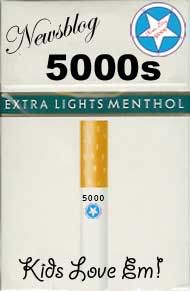Today’s Muslim American Problem
Saturday, December 18, 2004
A recent poll by Cornell University showed that 4% more Americans favored no curtailing of civil liberties for Muslim Americans than favored some restrictions of civil liberties. James Shanahan, a principal investigator in the study, stated that they were not “offering this data as a warning signal or to make policy decisions”. Shanahan went on to say, "But our results highlight the need for continued dialogue about issues of civil liberties in this time of war." This data will be very important to lawmakers, who will use it both as a warning signal and to influence policy decisions.
Republicans favored restrictions two to one over Democrats.
Three cubed percent believed that Muslim Americans should be forced to register with the Federal Government and one percent less wants the monitoring of mosques by law enforcement agencies. Half the number that want some restrictions of civil liberties would also like to see racial profiling of Muslim Americans, which is also four percent less than the number who think Mosques that should be monitored. Republicans favored restrictions two to one over Democrats. The number of Democrats that favored the restrictions is the second greatest prime number less than one fifth of respondents.
Islamophobia is a growing phenomenon in American society
The Council on American-Islamic Relations, meanwhile, asked the nation's leaders to "recognize that Islamophobia is a growing phenomenon in American society that must be urgently addressed." "Our nation and its values are diminished whenever any faith or ethnic group is viewed with such suspicion and hostility," said the council's executive director Nihad Awad.
The percent of Americans who believe that there will be a major terrorist attack in the United States in the next 12 months can be expressed by a prime number that is than 1/3 of respondents but less than 2/5 of respondents, but this number is 53% less than two years ago. A greater percent of those that believe that attacks would come attend religious services and watch television news regularly.
The study’s margin of error was 3.6%.






